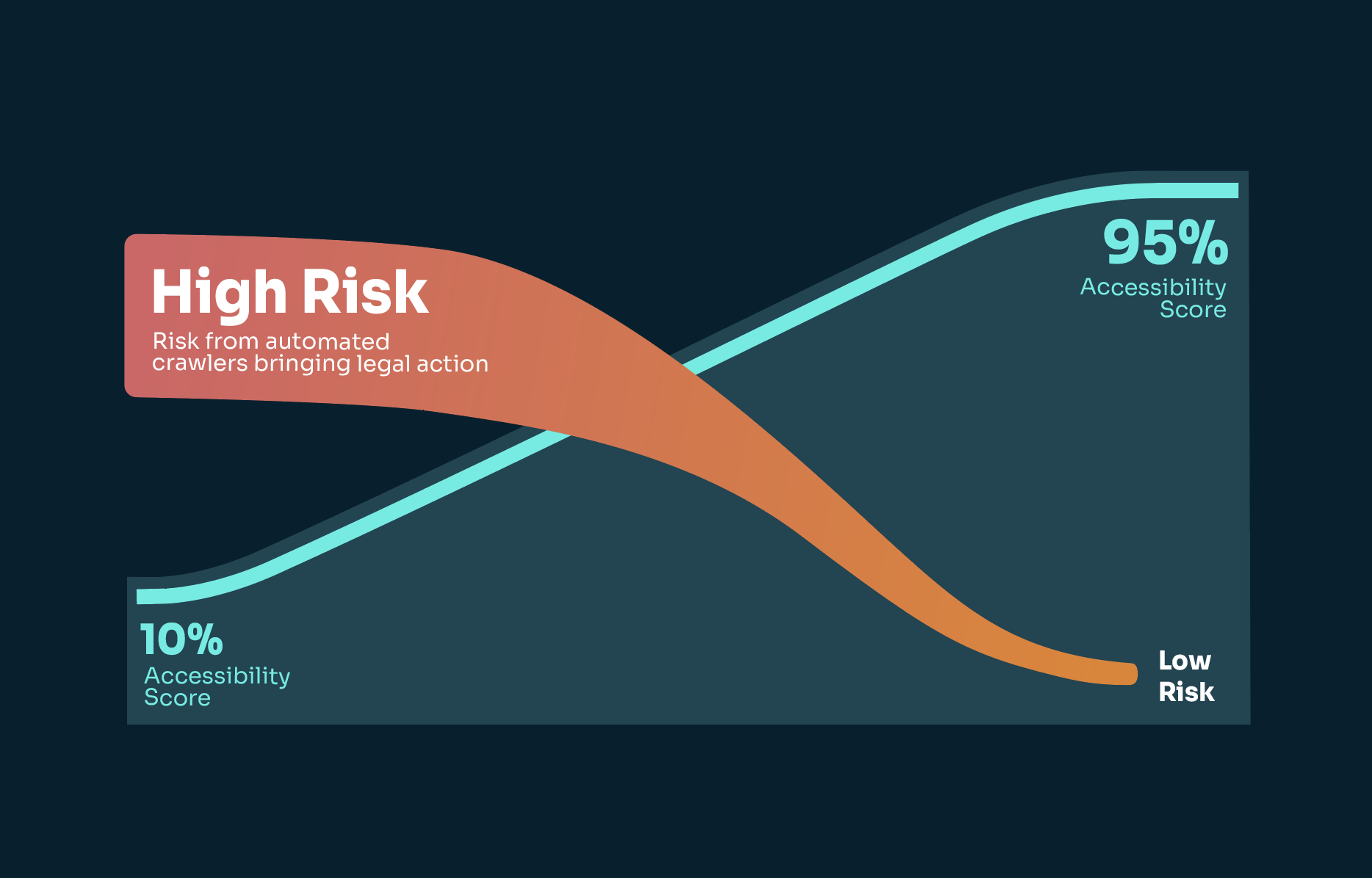
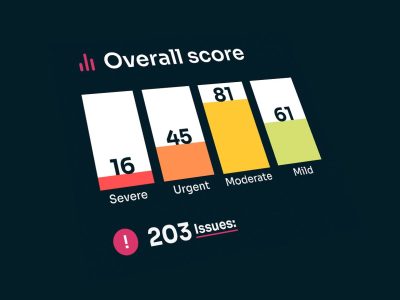
According to a recent study (source) pages frequently have accessibility errors. Fortunately, we have built a system that works to quickly identify and categories errors for severity. Ensuring our developers and content editors can effectively address issues by priority. Helping to boost compliance with legislation, dramatically reducing the risk of legal action being taken on your site.
Websites contain low contrast text
Contain missing alt text
Have missing labels
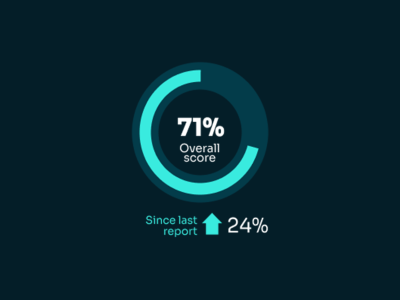
An accessible website offers a better user experience by making content easier to navigate, understand, and interact with for everyone, not just people with disabilities. Improved usability leads to higher engagement, lower bounce rates, and better performance across devices and platforms. Accessibility best practices also enhance SEO, speed, and overall site efficiency, helping your website reach a wider audience and perform more effectively.
We have built a platform that analyses select pages on your website for WCAG 2.2 compliance. This combines automated and manual testing, where our team will evaluate aspects such as colour contrast, keyboard functionality, screen reader compatibility.
We report this to you via a monthly or quarterly report, with any issues being actioned quickly by our in house development team.
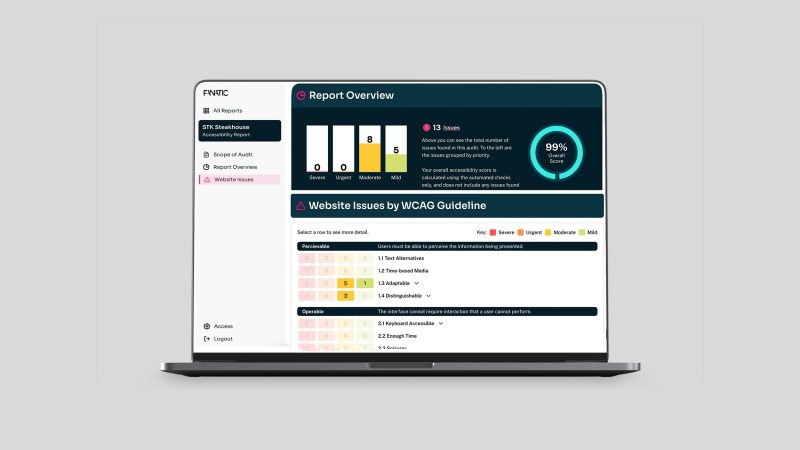




If you do business in the United States, you are probably already aware of the legal implications of an inaccessible site. Now, if you do business in Europe, you need to take the same care.
The European Accessibility Act (EAA) is an EU directive requiring key products and services – such as websites, apps, e-commerce, and banking – to be accessible to people with disabilities.
Non-compliance may result in fines, legal action, exclusion from public contracts, and reputational damage.
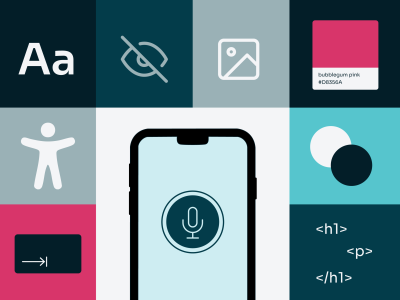
We can craft our service to suit your needs. Our method is based on your current digital environment and circumstances; for example: how large your website is, how often new content is added, and how urgent the timeline might be. Some standard approaches are:
We provide recurring bi-annual, quarterly or monthly audit plans, depending on the flexibility of your website. If you need some help, our development team are experienced in resolving accessibility issues – but we can also liaise with your dev team to ensure all accessibility issues are addressed. Let us know what you need so we can help.





Website accessibility refers to designing and developing websites so that people with disabilities, including visual, auditory, motor and cognitive impairments can use them effectively. It ensures content, navigation, and functionality are available to everyone.
Accessible websites provide a better user experience for all visitors, not just those with disabilities. Incorporating accessibility best practices into your websites also ensures you are compliant with recent legislation, such as the WCAG standards in the US and the EU Accessibility Act. Therefore reducing risk of legal risk action being taken.
The most widely recognised standard is the Web Content Accessibility Guidelines (WCAG) 2.1, Level AA. In the UK, accessibility is also linked to the Equality Act 2010, which requires businesses to make reasonable adjustments for people with disabilities.
Whilst you can run an automated audit yourself, the most reliable and useful approach is to commission a professional accessibility audit and report. Our team combines technical testing with manual reviews to identify issues and provide actionable recommendations.
Websites that fail to meet accessibility standards risk excluding users, damaging brand reputation, and facing potential legal challenges. It can also affect conversions, as visitors may leave if they struggle to use your site.
Accessibility should be reviewed regularly, especially after redesigns or new feature launches. We recommend annual audits at a minimum, with more frequent testing for organisations subject to strict compliance requirements.
Our accessibility reporting service provides a detailed analysis of your site against WCAG criteria. You’ll receive clear explanations of issues, prioritised recommendations, and practical guidance for your design and development team.
Yes. Many accessibility best practices such as providing alt text, using proper heading structures, and ensuring fast load times overlap with SEO ranking factors. Optimising for accessibility often leads to better visibility in search engines.
Learn how our accessibility service can help you meet compliance, reach a wider audience, and improve performance.
Read our blogs on accessibility and design
There is a point where your risk of action begins to fall dramatically, but being 100% accessible is often not required nor practical
